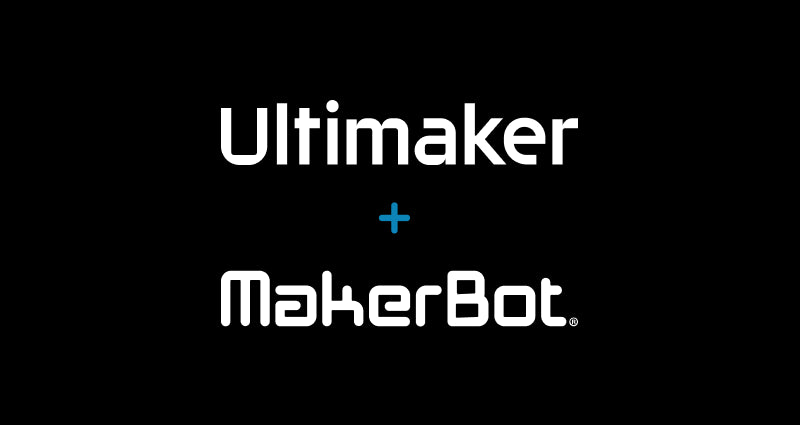
UltiMaker or MakerBot? Let's find out!
Choosing Your First 3D Printer: UltiMaker vs MakerBot — Which One Fits You Best?
Buying your first 3D printer is exciting — and a little bit daunting. If you’re deciding between two of the most trusted names in desktop/professional printing, UltiMaker and MakerBot, this guide will help you pick the right one for how you’ll actually use it. Whether you’re a hobbyist, an educator, or a small business owner, the right choice depends on reliability, materials, ease of use, and the support ecosystem.
What really matters when choosing a first 3D printer
- Reliability: Does it print consistently with minimal babysitting?
- Materials: What filaments does it support — PLA only, or engineering-grade materials like Nylon and Polycarbonate?
- Ease of use: Setup, bed leveling, software workflow, and how easy it is to troubleshoot.
- Support & ecosystem: Manufacturer support, replacement parts, community, and available materials.
- Scalability: Can this machine grow with your skill or business (upgrades, material options, networked printing)?
UltiMaker — Best for precision, versatility, and pro users
Who it’s for: Engineers, product developers, small businesses, and makers who want parts that perform reliably in real-world applications.
Why you’d pick UltiMaker:
- Material flexibility: UltiMaker printers are commonly paired with engineering-grade filaments (Nylon, Polycarbonate, PPS-CF) for strong, heat-resistant parts — great if your prints need to be functional, not just decorative.
- Precision & repeatability: Built for tight tolerances and consistent results across multiple prints.
- Robust software ecosystem: Cura and Ultimaker’s workflow make slicing and multi-material setups intuitive for advanced users.
- Ideal for prototyping and production support: If you need jigs, fixtures, or parts that go straight into a working environment, UltiMaker is a top choice.
See the Ultimaker collection to browse models and compatible professional filaments.
MakerBot — Best for education, first-timers, and simple, reliable printing
Who it’s for: Schools, classrooms, hobbyists, and anyone who wants a solid “plug-and-play” experience with reliable prints and minimal fuss.
Why you’d pick MakerBot:
- Simplicity: MakerBot machines are designed to be approachable; easy setup, user-friendly interfaces, and less hands-on maintenance for beginners.
- Education-focused features: Safety, classroom management, and cloud-based print workflows make these machines suited to learning environments.
- Print-ready materials: MakerBot’s ecosystem emphasizes tested, validated material profiles that reduce print failures for newcomers.
- Great stepping-stone: If your priority is learning, prototyping simple parts, or running workshops, MakerBot gets students and hobbyists printing fast.
Explore the MakerBot collection for classroom-friendly and entry-level models.
At-a-glance comparison
| Factor | UltiMaker | MakerBot |
|---|---|---|
| Best use | Professional prototyping, end-use parts | Education, hobbyists, simple prototyping |
| Materials | Wide (PLA, ABS alternatives, Nylon, PC, CF blends) | Mostly PLA/validated materials; user-friendly selections |
| Ease of use | Intermediate to advanced (powerful features) | Beginner-friendly (plug-and-play) |
| Support & ecosystem | Strong engineering support, broad 3rd-party material compatibility | Education-focused tools, simple workflows |
| Best for scaling | Yes — designed to support growing prototyping needs | Good for incremental learning and smaller proof-of-concept work |
Which one should you buy based on how you’ll use it?
If you’re a hobbyist or buying your first printer to tinker:
Go MakerBot if you want the fastest, least stressful route to printing success. It’s safer for classrooms and casual users who want reliable prints without spending hours troubleshooting.
If you’re a small business, engineer, or want to print functional parts:
Go UltiMaker. The materials, precision, and reliability make it a better long-term investment when prints need to perform under stress or when you’ll be iterating on functional prototypes.
If you’re not sure yet:
Start with MakerBot for learning and basic prototyping, but plan the upgrade path. If your needs quickly move toward structural parts or engineering materials, transitioning to an Ultimaker-style workflow will pay off.
Buying checklist — what to confirm before you press purchase
- Does the printer support the materials you plan to use (Nylon, PC, CF blends)?
- What level of customer support and replacement part access does the brand offer?
- Is the software workflow (slicing, bed leveling, remote printing) easy for your team to use?
- Does the printer have a proven track record for the part types you’ll make (fit-critical, load-bearing, cosmetic)?
- Can you afford the ongoing material costs if you upgrade to engineering-grade filaments?
Final thoughts
Both UltiMaker and MakerBot are excellent—just designed with different priorities. If your first printer needs to be an educational workhorse or an easy entry point, pick MakerBot. If you’re aiming for prototyping, parts that must perform, or you want to use engineering-grade filaments, choose UltiMaker.
Not sure which exact model fits your budget and workload? Check our collections and compare specs side-by-side:
Need a hand deciding? Drop us a message with what you plan to make (hobby prints, classroom kits, jigs/fixtures, small production runs) and your budget — we’ll recommend the specific model that fits your goals.

